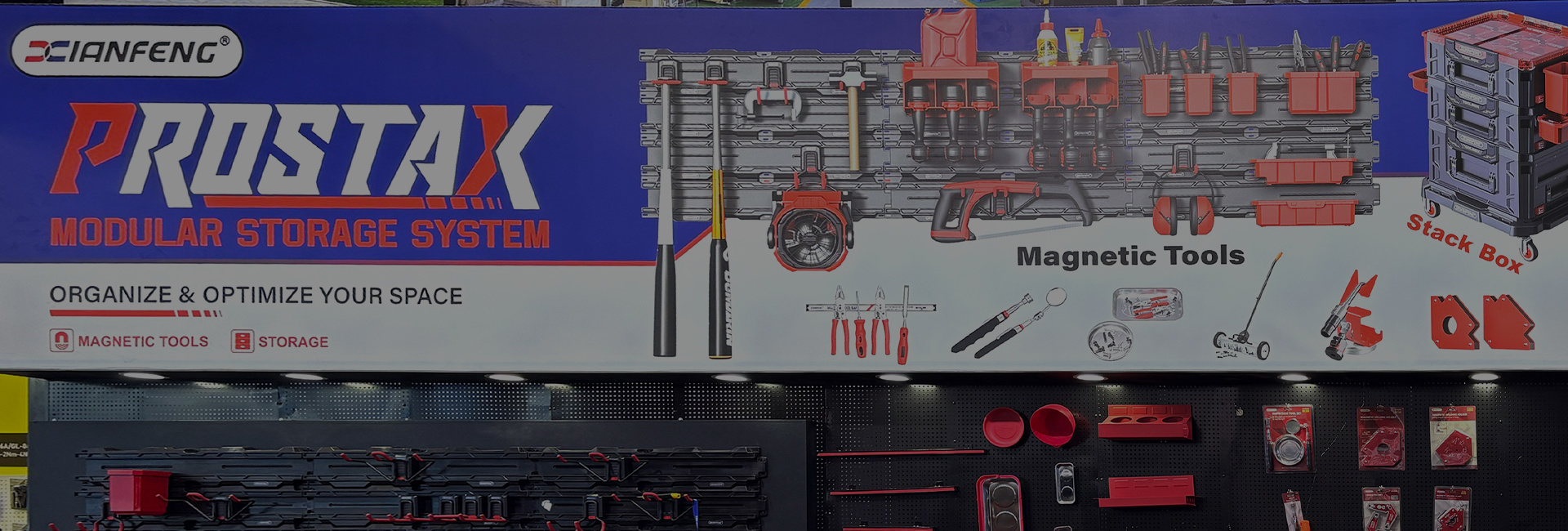How to choose a tool cabinet suitable for the factory workshop?
Jan 20,2025
Choosing a tool cabinet suitable for the factory workshop can be considered from the following aspects:
Storage requirements
Tool type and size: If storing large tools such as large wrenches, jacks, etc., a tool cabinet with a single-layer structure, large drawer space, and no excessive partitions inside the drawers can be selected; If storing small parts and tools such as screws, nuts, small measuring tools, etc., it is suitable for tool cabinets with multi-layer structures and finely divided drawers for easy classification and storage.
Number of tools: Determine the number and size of tool cabinets based on the total number of tools in the workshop. If there are many tools, you can choose a large capacity, multi drawer or multi-layer tool cabinet, or consider a combination tool cabinet to increase storage capacity.
Material quality
Steel: sturdy and durable, with strong load-bearing capacity, able to withstand heavy tools and equipment, suitable for storing heavy tools and vulnerable parts, and also has good fire, moisture, and rust resistance, which can adapt to complex environments in factory workshops.
Aluminum: relatively lightweight, corrosion-resistant, aesthetically pleasing, but expensive, with weaker load-bearing capacity compared to steel, suitable for storing lightweight tools and small parts.
Plastic: light weight, cheap price, rust and corrosion resistance, but low strength, easy to deform and damage, suitable for storing some lighter tools and office supplies.
Load bearing capacity
Lightweight tool cabinet: The load-bearing capacity of each drawer is generally below 50kg, suitable for storing small manual tools, measuring tools, small parts, etc.
Medium sized tool cabinet: The drawer can support a weight of 50-150kg and can be used to store medium weight tools such as power tools, small mechanical parts, etc.
Heavy duty tool cabinet: capable of withstanding a weight of over 150kg per drawer, mainly used for storing large and heavy tools and equipment, such as large wrenches, jacks, molds, etc.
Structural Design
Drawer structure: Single rail drawer tool cabinet drawers cannot be fully pulled out, and the load-bearing capacity is relatively small; The drawers of the double rail drawer tool cabinet can be fully pulled out for easy access to internal items, and their load-bearing capacity is generally stronger than that of single rail drawers; The three-level rail drawer tool cabinet, also known as the ball rail drawer, has good smoothness and load-bearing capacity; The I-shaped guide rail tool cabinet belongs to the category of simple guide rails, with a simple structure and low cost, but with a small load-bearing capacity.
Cabinet door design: If tools need to be frequently accessed, drawer style tool cabinets are more convenient; If storing larger items or equipment, a cabinet style tool cabinet with double or single doors may be more suitable.
Accessory functions
Locks: Considering the security and confidentiality of the tool, high-quality, sturdy and durable locks such as password locks, fingerprint locks, etc. can be selected to prevent the tool from being stolen or misused.
Wheels: If you need to move the tool cabinet frequently, you should choose a mobile tool cabinet with high-quality wheels. The wheels should have good load-bearing capacity, flexibility, and wear resistance, and it is best to have brake devices for easy positioning.
Handle: Full width aluminum alloy handle with adjustable labels for easy identification and management of the contents of each drawer, facilitating the opening, closing, and use of drawers.
Contact Us








